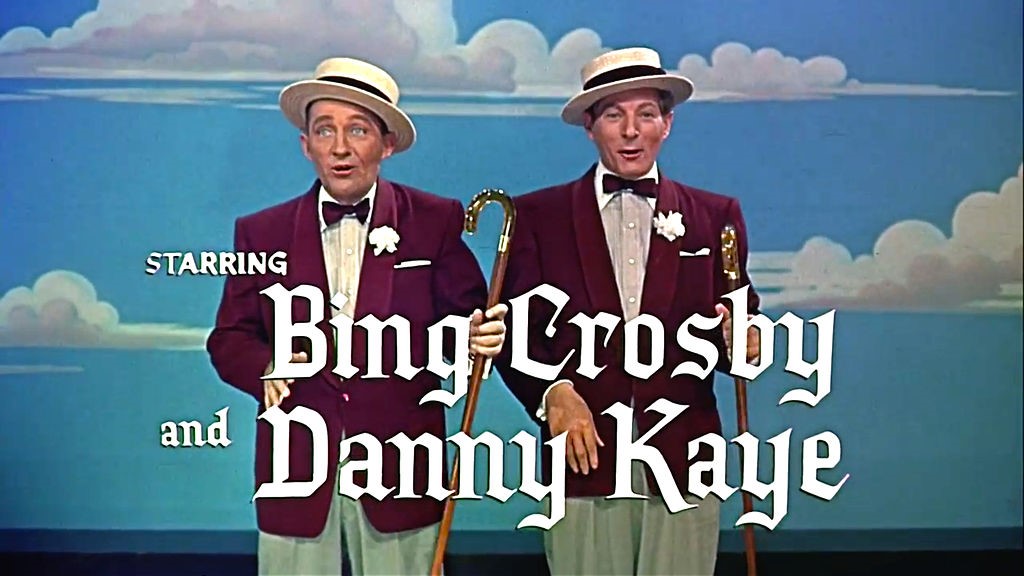“White Christmas” is a classic holiday film that first premiered in 1954, directed by Michael Curtiz. Starring Bing Crosby, Danny Kaye, Rosemary Clooney, and Vera-Ellen, the movie follows the story of two World War II veterans, Bob Wallace (Crosby) and Phil Davis (Kaye), who become successful entertainers after the war. The heartwarming tale begins when the duo decides to help their former army general, now running a struggling Vermont inn. To boost business, they plan a grand Christmas show with the help of two talented sisters, Betty (Clooney) and Judy (Vera-Ellen).
The film is renowned for its memorable musical numbers, including the iconic song “White Christmas,” originally performed by Crosby in the 1942 film “Holiday Inn” and reprised in this movie. The charming dance routines, catchy tunes, and festive atmosphere make “White Christmas” a perennial favorite during the holiday season. The chemistry between the cast members, particularly Crosby and Kaye, adds a layer of humor and warmth to the narrative, creating a timeless feel-good experience for audiences of all ages.
Beyond its musical and comedic elements, “White Christmas” also captures the spirit of camaraderie, generosity, and the magic of the holiday season. The snowy landscapes of Vermont, coupled with the enchanting performances and heartwarming plot, contribute to the enduring appeal of “White Christmas,” making it a cherished part of many families’ seasonal traditions for generations.

Here are 10 interesting facts about “White Christmas” movie to know more about it.
- Inspiration from Song: The movie “White Christmas” was inspired by the song of the same name, which was written by Irving Berlin and originally performed by Bing Crosby in the 1942 film “Holiday Inn.” The success of the song prompted the creation of the film, featuring a storyline centered around the holiday season.
- Technicolor Spectacle: “White Christmas” was one of the first major motion pictures to be released in VistaVision, a widescreen film format developed by Paramount Pictures. The use of Technicolor and VistaVision contributed to the movie’s visually stunning and vibrant scenes.
- Bing Crosby’s Second Time: Bing Crosby reprised his role from “Holiday Inn” in “White Christmas,” making it the second time he sang the iconic song on the silver screen. The song “White Christmas” became the best-selling single of all time and won an Academy Award for Best Original Song.
- Real Snow: Despite the movie’s sunny California filming location, the production team had to use a snow machine to create the wintry scenes. The fake snow, made from a concoction of foam and other materials, was used to give the illusion of a snowy Vermont setting.
- Rosemary Clooney’s Debut: “White Christmas” marked Rosemary Clooney’s film debut. She played the role of Betty Haynes, one of the singing sisters. Clooney’s rendition of “Love, You Didn’t Do Right By Me” is a memorable musical moment in the film.
- Dancing Talents: Vera-Ellen, who portrayed Judy Haynes in the film, was a highly skilled dancer known for her precise and energetic performances. Her dance numbers with Danny Kaye added flair to the movie’s entertainment value.
- Military Connection: The film pays homage to the military, featuring a storyline involving a retired general played by Dean Jagger. This reflects the post-World War II era and highlights the importance of supporting veterans.
- Set Design Challenges: The set designers faced challenges in creating realistic snowy scenes, as the fake snow sometimes caused the actors to slip and slide during dance numbers. Despite the difficulties, the team successfully captured the festive and wintry atmosphere.
- Vera-Ellen’s Dubbing: Although Vera-Ellen was an accomplished dancer, her singing voice was dubbed by Trudy Stevens in the song “Sisters.” This was a common practice in Hollywood during that era, where actors would be dubbed by professional singers.
- Cultural Impact: “White Christmas” has left a lasting cultural impact and is considered a holiday classic. It continues to be a beloved tradition for many families, with its timeless themes of love, friendship, and the joy of the holiday season resonating with audiences over the decades.
“White Christmas” stands as a timeless cinematic gem that weaves together the magic of the holiday season, unforgettable musical performances, and a heartwarming storyline. From the iconic rendition of the title song by Bing Crosby to the energetic dance numbers featuring the talented cast, the film captures the essence of Christmas with warmth and charm. Its enduring popularity is a testament to the lasting appeal of its characters and the festive spirit it invokes. The movie, wrapped in nostalgia and sprinkled with Hollywood magic, continues to be a cherished part of holiday traditions, inviting audiences to experience the joy, love, and camaraderie that define the true meaning of Christmas. As Bing Crosby’s crooning voice serenades us into a winter wonderland, “White Christmas” remains a cinematic gift that keeps on giving, transcending generations and bringing joy to hearts young and old.



